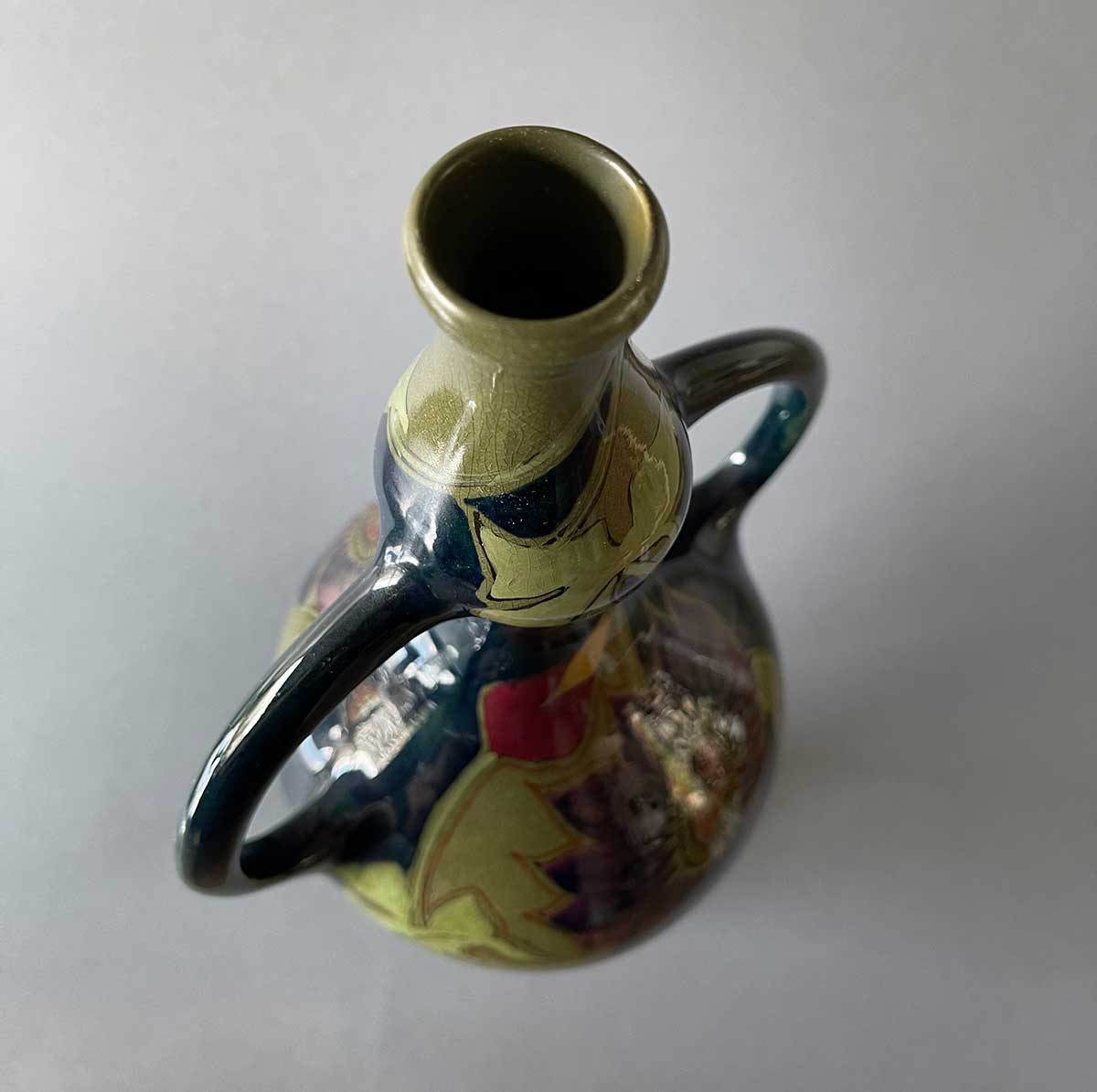
What is Rozenburg Pottery
Rozenburg is one of the most famous pottery factories in the Netherlands. The Rozenburg Pottery factory produced ceramics and porcelain from 1883 untill 1917. Rozenburg pottery and porcelain is one of the highlights of the Art Nouveau movement in the Netherlands. The factory is world famous for the eggshell porcelain, introduced by Rozenburg in year 1900 at the world exhibition in Paris.
The History of the Dutch Rozenburg Factory
The Royal Pottery Factory Rozenburg was founded in 1883 by Wilhelm Wolff Freiherr von Gudenberg, who was originally from Germany. His ambition was to produce traditional bleu and white Delft ceramics, very popular in Holland at the end of the 19th century. Von Gudenberg had previously worked at the Delft factory De Porceleyne Fles. But through the collaboration with Theodoor Colenbrander, who became artistic director of Rozenburg in 1884, the course of the factory quickly took to a new direction. The Rozenburg factory made revolutionary designs for that period in time, in free, expressive and mostly abstract forms.

Rozenburg and the Art Nouveau Style
The pottery painters were also inspired by the then prevailing fashion. The Art Nouveau Period was popular in the Netherlands between 1884 and 1914. In the Art Nouveau period, artists looked for inspiration from nature with graceful and organic shapes. Oriental art and the Arts and Crafts movement from Great Britain also provided the designers of Rozenburg with the necessary inspiration. It is mainly dark floral and animal motifs that characterised the first period of the factory.

Eggshell Porcelain, a big innovation for Rozenburg
Between 1883 and 1895 the Dutch Rozenburg factory was managed by various directors who failed to make a big success with the ceramics. This changed when Jurriaan Kok took office in 1895. Under his supervision, experiments were carried out with various processes that eventually led to the launch of a new product: eggshell porcelain. Rozenburg started in 1899 with the production of this delicate and finely painted porcelain. This collection was first exhibited at the World Exhibition in Paris in 1900 and became an international sensation. Various museums, including the Musée des Beau Arts in Paris and the Victoria and Albert Museum in London, purchased pieces and Rozenburg’s eggshell porcelain won several prizes. Rozenburg Eggshell porcelain is still one of the highlights of Art Nouveau in the Netherlands. Decors consists of fine lines and patterns with influences from nature, depicting flowers, birds, fish and insects.

Rozenburg from 1883 till 1917
After the success of the world exhibition in Paris in 1900, a successful period followed for the Rozenburg factory from The Hague n the Netherlands. Orders increased, and several other international exhibitions followed. But unfortunately the Rozenburg Pottery factory was unable to maintain this success. Due to the high costs of production and increasing competition, from other Dutch pottery such as Zuid-Holland from Gouda, Rozenburg lost more and more of it’s market share. Art Nouveau also slowly went out of fashion in The Netherlands. New innovations from Rozenburg, such as the launch of Juliana pottery and ‘incruust’ pottery, received much less enthusiasm from the public. When the First World War broke out in Europe in 1914, raw materials became scarce. In the same year, the factory ceased production. Rozenburg was liquidated in 1917.
Rozenburg in historic pictures




Rozenburg Pottery signs, marks and logo’s
All Rozenburg objects are signed with different marks, symbols, signatures and logo’s. Want to learn more about when and by whom your Rozenburg object was made? Please read this article.
Rozenburg Pottery for sale
I would like to expand my existing Rozenburg collection. Do you have a Rozenburg vase or wall chargers for sale? Then please get in touch. Below you see a part of my own Rozenburg collection, some of which are available for sale, and others are not. These objects belong to my private collection.
-
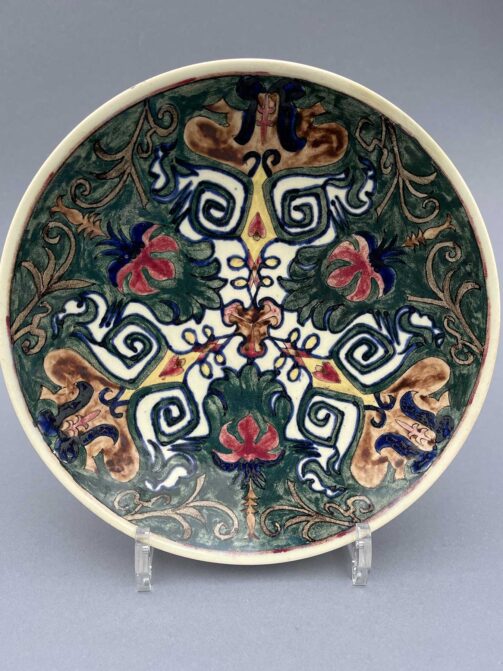 Rozenburg pottery wall charger 22 cm wide from 1889 in the style of Colenbrander€ 385,00
Rozenburg pottery wall charger 22 cm wide from 1889 in the style of Colenbrander€ 385,00 -
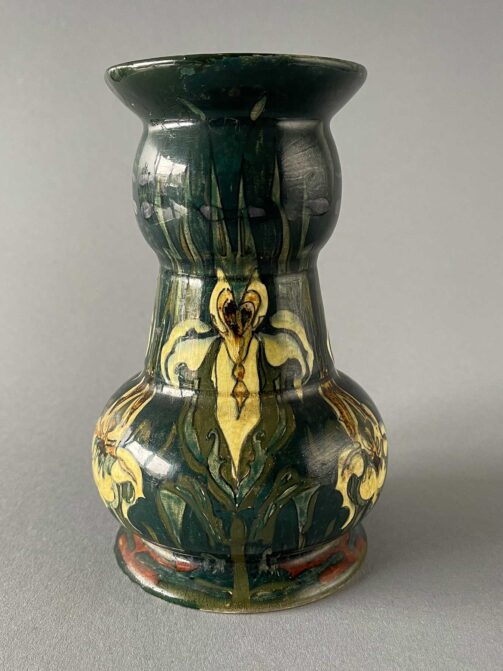 Rozenburg vase, model 322 with a decor of wild orchids from 1895€ 135,00
Rozenburg vase, model 322 with a decor of wild orchids from 1895€ 135,00 -
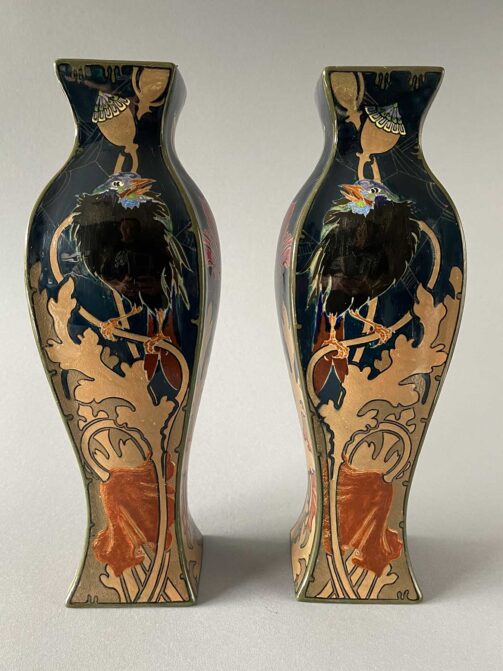 Rozenburg pair of vases, painted with birds and poppies, made in 1914€ 1.395,00
Rozenburg pair of vases, painted with birds and poppies, made in 1914€ 1.395,00 -
 Rozenburg vase, model 258 of 25 cm in height, painted in 1902 by Jacob van Rossum
Rozenburg vase, model 258 of 25 cm in height, painted in 1902 by Jacob van Rossum -
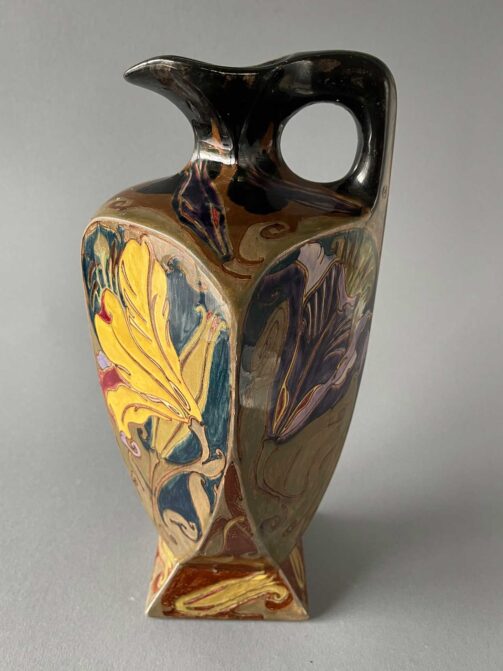 Rozenburg ewer, model 393 of 29.5 cm high from 1903, painted by Jan van der Vet€ 680,00
Rozenburg ewer, model 393 of 29.5 cm high from 1903, painted by Jan van der Vet€ 680,00 -
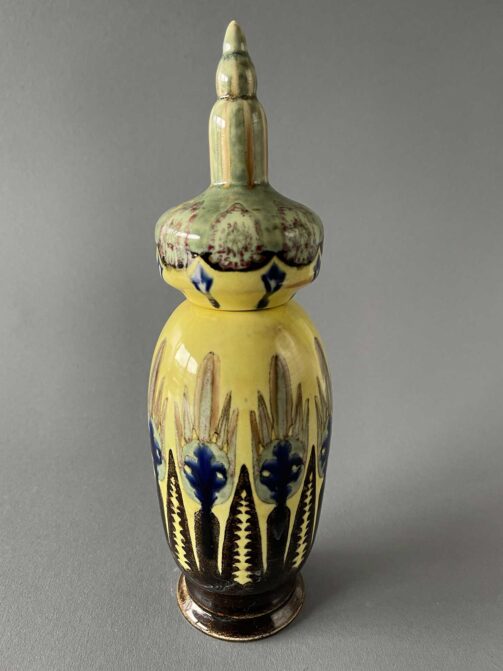 Lidded vase or turban pull from Rozenburg, decor geel fond, designed by Theo Colenbrander, made in 1890
Lidded vase or turban pull from Rozenburg, decor geel fond, designed by Theo Colenbrander, made in 1890 -
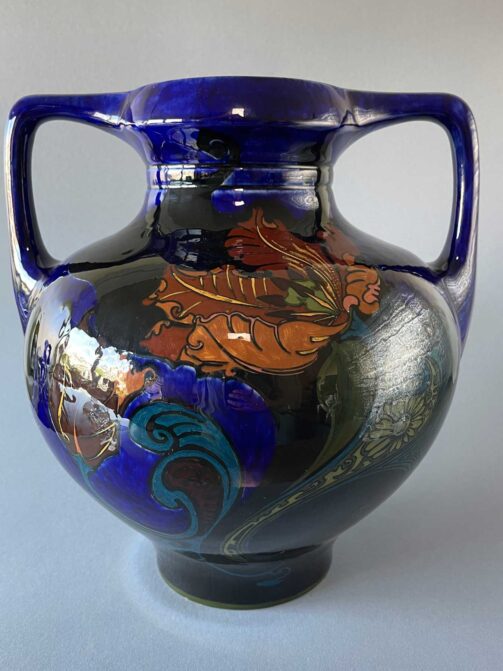 Large Rozenburg vase, model 428 of 34 cm high, painted in 1904 by Jan van der Vet€ 960,00
Large Rozenburg vase, model 428 of 34 cm high, painted in 1904 by Jan van der Vet€ 960,00 -
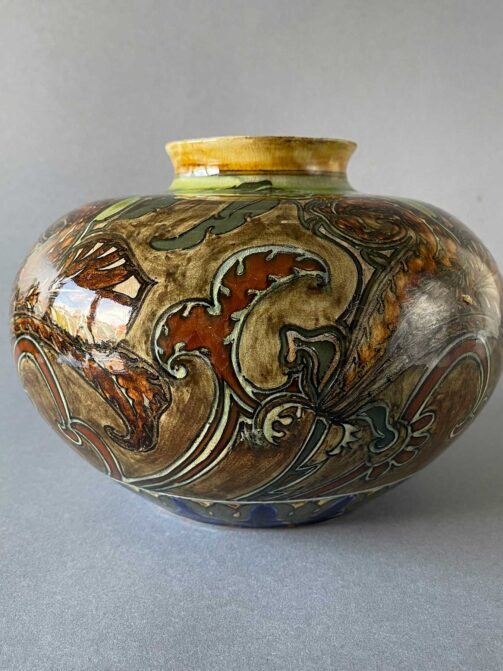 Rozenburg vase, model 309, made in 1895 and painted by Samuel Schellink.€ 485,00
Rozenburg vase, model 309, made in 1895 and painted by Samuel Schellink.€ 485,00 -
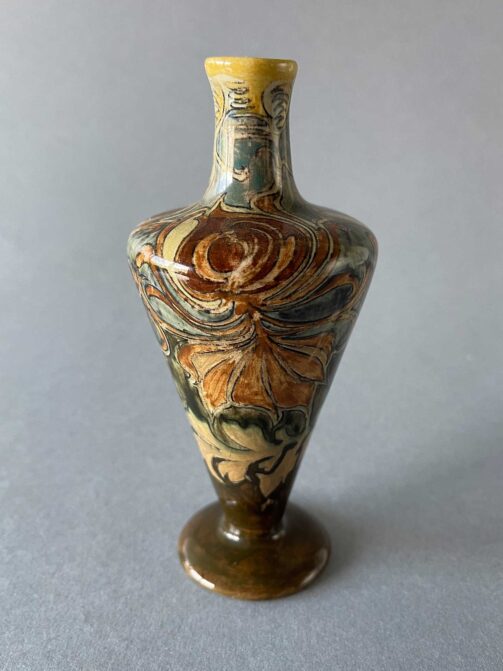 Rozenburg vase, model 244 from 1899, 14.5 cm high€ 240,00
Rozenburg vase, model 244 from 1899, 14.5 cm high€ 240,00

